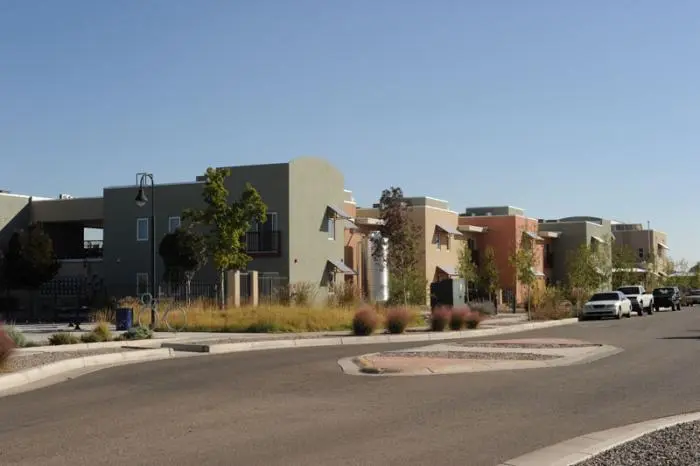
News
By Jared Klukas, April 28, 2023
In partnership with the U.S. Environmental Protection Agency’s Office of Brownfields and Land Revitalization, Smart Growth America (SGA) created a set of fact sheets that highlight strategies communities can use to help mitigate displacement in the contexts of brownfields redevelopment. SGA conducted interviews with community groups and municipal leaders from across the country to learn more about strategies to minimize residential and business displacement as well as implementation practices.
In many cases, the cleanup and restoration of brownfields—or properties with environmental contamination or potentially contaminated land—present a significant burden for communities because of strenuous statutory requirements, a lack of financial resources, and limited capacity within local government. Even after the cleanup process is finished, revitalized brownfields could perpetuate displacement of local residents and small businesses, due to gentrification and inequitable housing practices.
Without proactive, robust strategies and approaches during and after the cleanup process, brownfields redevelopment can contribute to the displacement of residents and businesses—especially as brownfields are disproportionately located in or near communities of color and low-income communities—their redevelopment is a key opportunity to advance equity and transform communities from underutilized, potentially hazardous land into revitalized new spaces for housing, businesses, civic centers, or amenities.
Although there are many approaches to mitigating displacement during and after the completion of a brownfield redevelopment process, many communities may be unfamiliar with specific tools or how they can be implemented. Along with the background and mechanisms of each tool and strategy, the factsheets provide lessons learned and reflections from practitioners and their experiences, plus tips for success, questions to ask in the planning process, case studies, and other resources.

Check out the five fact sheets:
- Community Benefits Agreement — a legal contract between community members and/or groups with a private development entity that outlines needs and benefits. Specific priorities and outcomes are outlined, often along with a commitment of funding to accomplish the outcomes during construction and/or after the project is completed.
- Community Land Trust — a method of establishing sustainable, long-term housing affordability in which a nonprofit purchases housing or land and rents or sells units to residents at an affordable price.
- Inclusionary Zoning — a legal requirement codified in a community’s zoning regulations that specifies provisions on units of housing that must be set aside as affordable under a certain percent of average median income.
- Small Business Preservation Programs — an umbrella term for programs designed to support small businesses via technical assistance, education, or financial programs.
- Tax Abatement — a portfolio of financial programs intended to help residents and small businesses remain in their communities through home improvement project incentives and tax reductions.
SGA interviewed individuals in the following organizations/locations and thank them for their contributions to the project:
- City of Burlington, Vermont—Community & Economic Development Office
- Duwamish River Valley Coalition
- Sawmill Community Land Trust
- Strategic Actions for a Just Economy (SAJE)
- City of Minneapolis, Minnesota—Office of Community Planning & Economic Development
These fact sheets are designed to provide the information needed for community leaders and members to pursue or replicate these tools and strategies within their communities as they work to prevent displacement and gentrification, especially in the context of brownfields redevelopment.
Related News

© 2025 Smart Growth America. All rights reserved
Site By3Lane Marketing










